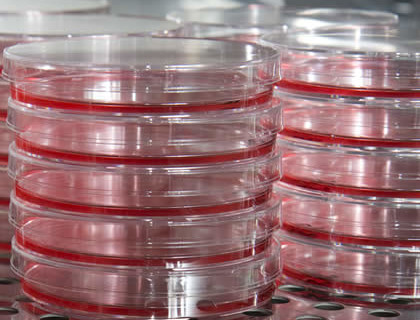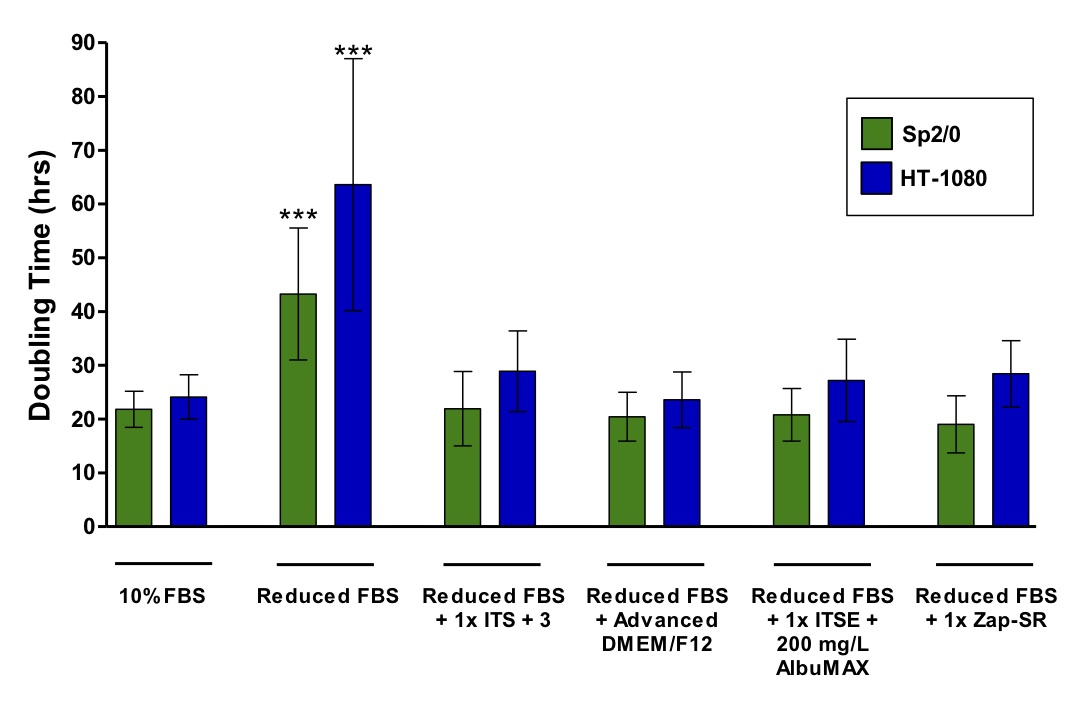
Where’s the Beef!?
A Guest Blog by Randall Alfano, Ph.D., Cell Culture Scientist, InVitria
Zap-SR (Serum Reducer) can stretch the dwindling serum supply and save money
Many would agree that the best companion for a hot grill on a lazy Saturday afternoon is the perfect cut ribeye or T-bone steak. But as many have found, the rising prices of beef to record levels has made chicken or fish the more likely main course for those Saturday night dinners. According to CNNMoney, since 2010 the price per pound of beef has risen 56% to record levels not seen in the last 20 years. Prices aren’t slowing their upward trajectory either. Early this year the largest monthly increase in beef was seen in over 10 years. The soaring beef prices are the result of a one-two combination of prolonged drought and severe weather that has shrunken cattle herds while growing demand from overseas markets such as Asia has further stressed the dwindling supply.
FBS in Cell Culture
Both academic and industrial cell culture scientists are nervously watching this precarious situation unfold, albeit not for the love of a good steak. Less cattle means severely restricted amounts of available fetal bovine serum (FBS) for the biomedical industry. For years, FBS has been used to provide cells cultured outside of the body with critical growth factors, extracellular matrix proteins, vitamins, trace elements, and other necessary organic compounds. Because of its rich composition, FBS can support the growth and high cell viability of virtually any cell type. Therefore, FBS has found its way into cellular production systems for vaccines, stem cell expansion protocols for both Cell Therapy as well as decellularized products, academic research, and drug discovery. Given the current projections of rising demand for serum to enable the commercialization of emerging vaccine and stem cell therapies combined with more intense focus of academic research requiring cell culture, the price of FBS is expected to sky rocket in the next 5 years as well as be extremely limited in supply. This has potential to both hinder development of novel therapeutics as well as impede cell and molecular biology research in already cash-strapped academic laboratories.
Moving Away from FBS
While most biopharmaceutical manufacturing in CHO cells has moved to serum-free, animal component-free, or chemically defined media formulations; the transition has not been as easy for other niches within the biomedical industry, such as vaccines and the Cell Therapy space. Cell viability and performance has been has been noted to be reduced or variable from lot to lot when using serum-free formulations due to the inclusion of animal components of varied starting qualities that are sourced from serum. Further, the cost of goods dramatically increases with the use of serum-free formulations as most of these media are significantly more expensive than using serum.
Serum Reduction as a Solution
Given that serum-free isn’t achieving desired results or is too costly for certain projects, reducing the required serum in culture could be an effective way to reduce costs and still retain expected performance. One tool that has been designed to effectively reduce the working serum concentration by a minimum of 50% without sacrificing cell performance is Zap-SR. Formulated by InVitria, Zap-SR is a novel, animal component-free, and chemically defined supplement. Zap-SR is compatible with a variety of cell types and basal medias with no adaptation needed.
We compared the cell culture performance of the ITS + 3 products (Sigma Aldrich I2771), Advanced DMEM/F12 (Life Technologies 12634-010), or ITSE (Life Technologies 51500-056) + AlbuMAX (Life Technologies 11020021) to Zap-SR in the Sp2/0 hybridoma and HT-1080 fibrosarcoma cell lines. As expected, Sp2/0 hyrbidoma cells and HT-1080 cells were sensitive to 99.9 and 80% serum reduction as evidenced by the increase in cell doubling time. Cell proliferation was efficiently rescued by all of the products tested (Figure 1A). This initial piece of data indicates that serum can be significantly reduced if critical serum proteins, such as insulin and albumin, are added back to the culture medium.
However, supplementing media with common cell culture proteins and other critical reagents to reduce the amount of serum required is nothing new, as evidenced by the plethora of products currently on the market for this purpose. So any cell culture scientist would look at the data and have to ask “so what?” Calculating the cost of the 4 products used above to produce 1 L of reduced serum complete growth medium and comparing it to the 10% FBS-containing medium reveals the true advantage of Zap-SR. The ITS + 3 product was shown to be effective in cell culture but economically not viable as volumes required would significantly increase the cost of the complete growth medium in comparison to 10% serum media (120 and 90%, for Sp2/0 and HT-1080, respectively). The Advanced DMEM/F12 basal medium has minimal cost savings (5%) if extremely low amounts of serum (i.e. 0.1%) are used. However, addition of 2% serum (as in the case of HT-1080), negates any cost savings over the 10% FBS medium. The combination of ITSE and AlbuMax products from Life Technologies is also slightly more expensive than the 10% serum medium as well (11 and 8% increase for Sp2/0 and HT-1080, respectively). However, reduced serum growth medium supplemented with Zap-SR demonstrated significant and consistent cost savings for both cell lines. However, reduced serum growth medium supplemented with Zap-SR demonstrated significant and consistent cost savings for both cell lines. The cost of the Zap-SR complete medium for the Sp2/0 hybridoma was reduced by 37% versus the 10% serum-containing medium, while the HT-1080 reduced serum medium had a reduced cost of 29%.

Therefore, use of Zap-SR can lower the cost of doing routine cell culture, lessen the dependability of the biomedical industry on the ever fluctuating serum industry, and potentially enhance the dependability of cell performance through the reduced exposure to levels of variable serum constituents. Maybe now cell scientists can relax, even if steak is still expensive.
For questions regarding Zap-SR or any of the InVitria products, please contact our technical support.